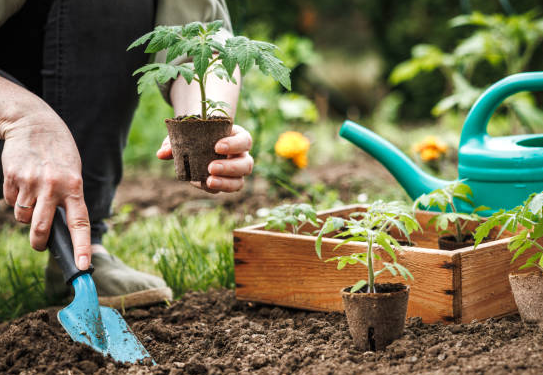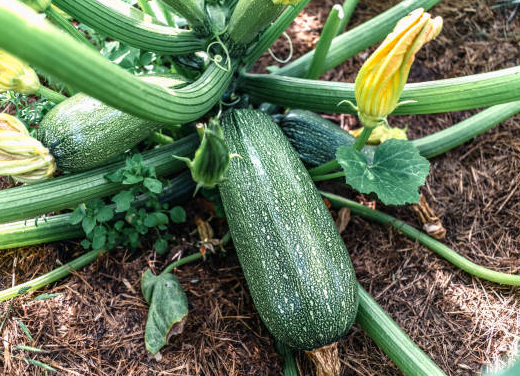Many people enjoy growing vegetables in their gardens, but for beginners, it can be a bit overwhelming. Designing a practical vegetable garden requires some basic know-how to make it efficient and productive. Although it might seem simple, growing vegetables in your garden requires thoughtful planning and attention. Below are some useful tips to help you set up your garden for success!

1. Choose the Right Location for Your Vegetable Garden
Vegetables, like most plants, need plenty of sunlight to grow well. Most vegetables thrive in areas with full sun, so it’s essential to pick a sunny spot for your garden. Aim for a location that gets at least 6 hours of sunlight a day, such as the south or west side of your garden.
I often see garden videos online where people put their vegetable garden in shaded corners or behind walls, which seems logical but doesn’t take sunlight into account. Without proper sunlight, vegetables won’t grow well, no matter how well you plan the rest of the garden.
2. Plan the Layout of Your Vegetable Garden
Yes, your vegetable garden needs a layout just like any other garden! A well-planned garden layout will make your gardening experience more enjoyable and productive.
The size of your garden determines how you plan it:
-
Large Gardens: You have the space to make your vegetable garden a separate area in your yard. You can dedicate a section of the garden entirely to vegetables, with more room for rows and beds.
-
Small Gardens: If your garden space is limited, you need to maximize the available space while still keeping the garden functional. Raised beds and vertical gardening are great options for small spaces, making the most of every inch.
In addition to maximizing space, you also need to ensure the garden is easy to use. Here are some tips for making your garden both functional and efficient:
-
Accessibility: Make sure your planting beds are within arm’s reach. They shouldn’t be so wide that you can’t reach the far side. If your beds are too wide, you’ll need a path down the middle to allow easy access for planting and harvesting. This is why many vegetable gardens are designed with small squares or rectangular beds.
-
Raised Beds with Borders: To prevent rain or irrigation from washing away your nutrient-rich soil, create borders for your planting beds. You can use bricks, stone slabs, tiles, treated wood, or any material that will keep the soil contained. This also prevents soil from spreading across the garden, keeping everything neat.
-
Paths Between Beds: Make sure to leave pathways between beds for easy access. Paths should be about 40-60 cm (16-24 inches) wide—just enough for one person to pass through comfortably. You can use garden pavers or gravel for these paths.

If you follow these principles, your vegetable garden layout will be practical and efficient, and much easier to maintain than a chaotic arrangement.
3. Choose the Right Soil for Your Vegetables
Anyone who has grown vegetables will tell you that good soil is key to successful gardening. For healthy, productive plants, you need nutrient-rich soil.
The best soil is typically found in rural gardens, but in cities, you’ll likely need to buy soil or mix your own. Here’s what makes a good soil mix for vegetable gardens:
-
Peat Moss or Compost: These are essential for improving the soil’s texture and nutrient content. Compost is full of organic matter that will nourish your vegetables.
-
Organic Fertilizer: Using composted manure or other organic fertilizers will add extra nutrients to the soil, helping vegetables grow strong and healthy.
-
Coarse Sand: Adding some coarse sand helps improve drainage, especially in clay-heavy soils.
Once you mix these ingredients, you’ll have a fertile soil mix that is perfect for growing vegetables.
Final Thoughts
Designing and maintaining a vegetable garden requires more than just throwing some seeds in the ground. To be successful, it’s important to choose the right location, plan your garden layout for easy access, and provide nutrient-rich soil for your plants. While these are just a few basic tips, there are plenty of other tricks to learn as you go. Feel free to share your own gardening tips and experiences!
In short, growing vegetables in your garden may look easy, but it takes a bit of planning and knowledge to maximize your results. With these tips, you’ll be on your way to a bountiful vegetable garden that yields a great harvest!

